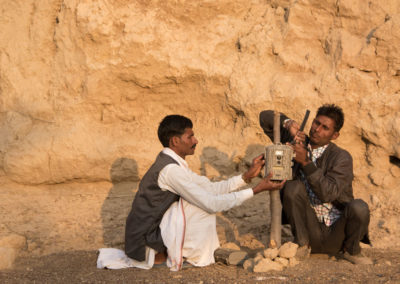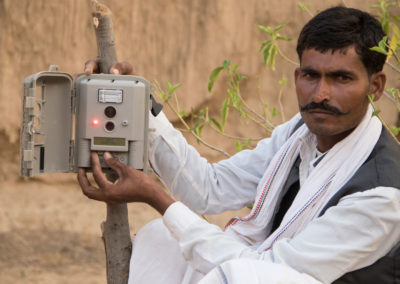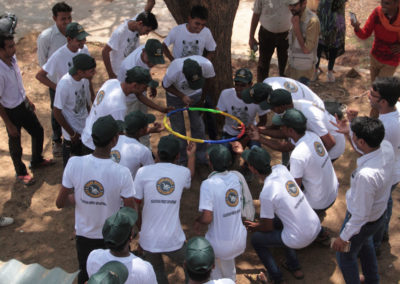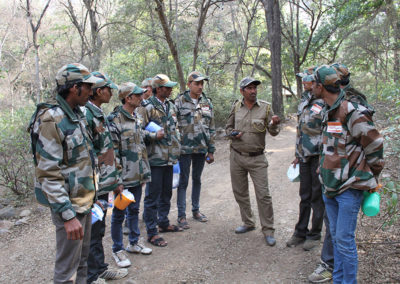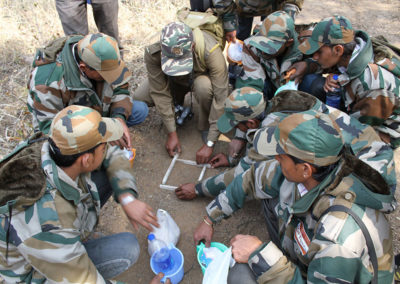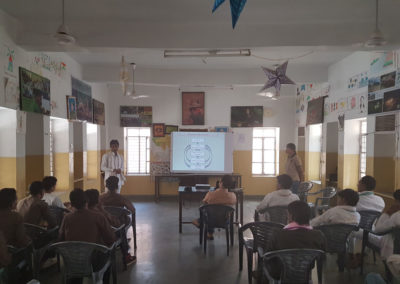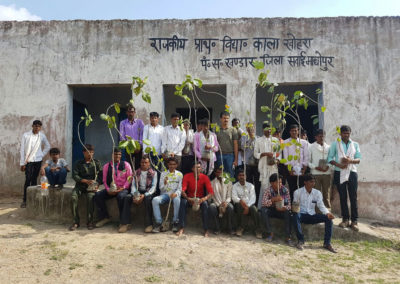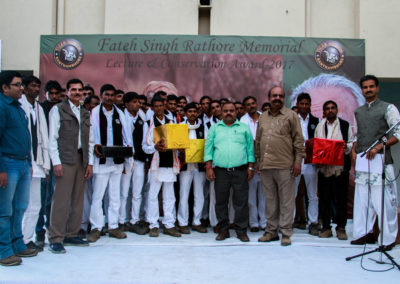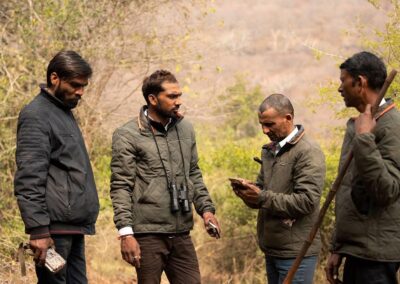Tiger Monitoring
Conceived by Dr. Dharmendra Khandal and Mr Y.K. Sahu, the then Field Director of Ranthambhore and with the consistent support of Jaisal Singh and Anjali Singh of SUJAN, the idea was to improve tiger monitoring and vigilance in historically difficult areas for the Forest Department to access.
The Forest Department suggested the areas they want to focus on. Tiger Watch, with years of experience, in engaging local communities acted on the ground by handpicking Village Wildlife Volunteers from villages on the periphery of Ranthambhore Tiger Reserve, primarily subsistence farmers and herders.
These Volunteers belong to pastoral communities and are thus skilled in tracking and identifying wildlife. Tiger Watch trains them in basic field techniques such as camera trapping tigers. A team of Village Wildlife Volunteers operates in specified areas under the guidance of an area coordinator, who further relays critical information such as geotagged camera trap photos to Tiger Watch and the Forest Department using smartphones and online messaging applications.
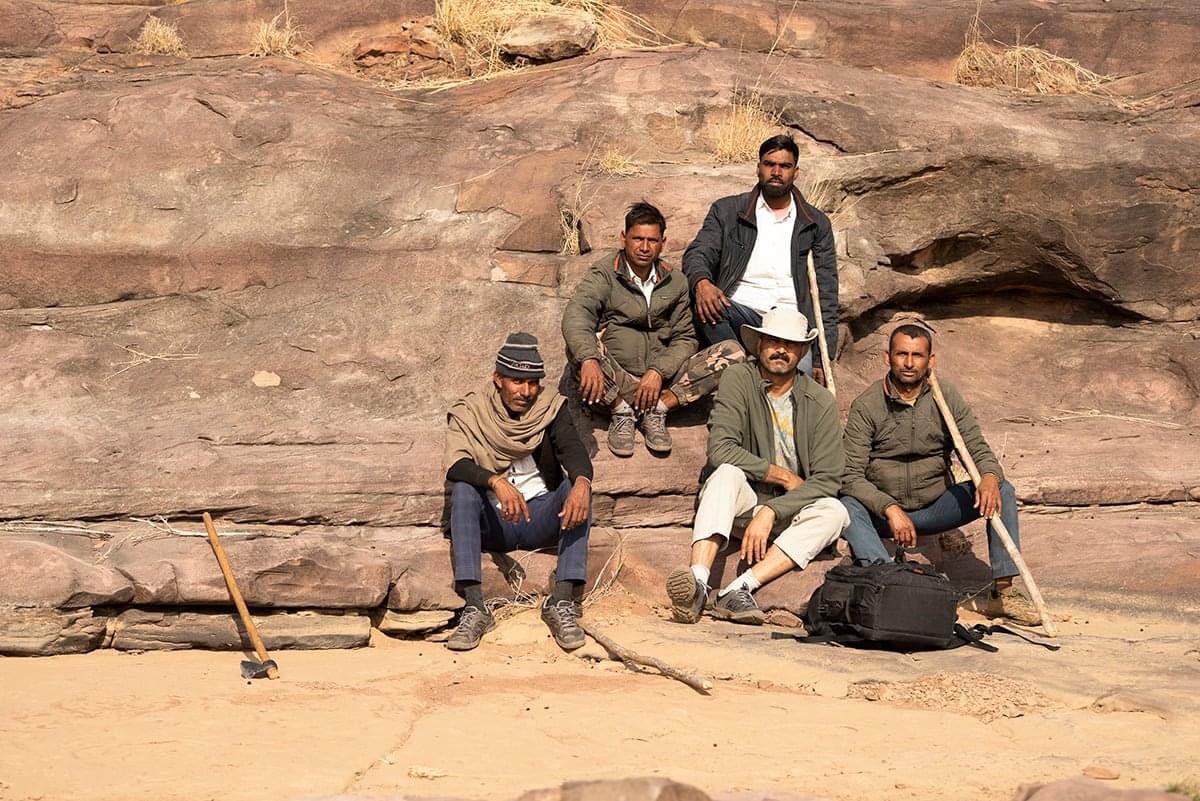
The Volunteers monitor tigers moving outside protected areas in the Ranthambhore landscape. A Volunteer has even tracked and followed a tiger for 240 km to the neighbouring state of Madhya Pradesh, which helped map out the dispersal routes of the tigers of Ranthambhore for the first time. The information obtained through this exercise has never been seen before and has evaded generations of forest officers and scientists.
Where Does the Tiger Monitoring Team Work?
Ranthambhore Tiger Reserve
The Volunteers monitor tigers outside of the protected areas in both Divisions I and II (Kailadevi Wildlife Sanctuary) of the Ranthambhore Tiger Reserve, and their vigilance has enabled the establishment of a population of tigers in Kailadevi Wildlife Sanctuary.
Ramgarh-Vishdari Tiger Reserve
The team has also monitored a fledgling population of tigers in this newly declared tiger reserve south of Ranthambhore Tiger Reserve in Bundi district. The team also helped train the forest staff to track and monitor tigers safely.
Dholpur-Karauli Tiger Reserve
The nascent breeding population of tigers in this district directly abutting the Kailadevi Wildlife Sanctuary in the north exists solely due to the protection and monitoring efforts of this team. Due to the fruits of these efforts, the government recently declared the Dholpur-Karauli Tiger Reserve.
Mukundara Hills Tiger Reserve
The team even monitored and trained the local forest staff of this tiger reserve to track and monitor the tigers that had been translocated to this reserve in Kota district. Often prior to the translocation of Ranthambhore tigers to other areas the team is called upon to assist in localizing efforts so that the tigers may be translocated safely.
Monitoring Conflict Tigers: Notable Cases
The team has tracked and monitored conflict tigers in and outside the Ranthambhore Tiger Reserve, assisting the Forest Department in these times of crisis by closely monitoring such tigers and acting as a bridge between the Forest Department and local communities.
T104 — The Village Wildlife Volunteers monitored this male tiger until its capture in 2019 after he killed three people. The team also played an important role in locating the tiger and capturing it with the flying squad.
T98 — The team monitored this male tiger who had killed a woman in 2018 and then as he dispersed to the Mukundura Hills Tiger Reserve in Kota, over 150 Km away.
Monitoring Dispersing Tigers: Notable Cases
T56 — This program was formed after this male tiger dispersed outside the park, crossed the Chambal river, and went on a 240-km journey before stopping in the forests of Datia in the heart of neighbouring Madhya Pradesh. The first Village Wildlife Volunteer, Hanuman Gurjer, tracked this tiger along this journey using only camera traps and a motorcycle for mobility, which at the time was heralded as a feat due to the absence of the use of radio telemetry.
T91 – T 91 was first tracked by the team from the range of Baler in Ranthambhore National Park before crossing the Chambal river into neighbouring Madhya Pradesh where he infamously attacked a man before retracing his steps back into the tourism areas of Ranthambhore National Park. The team then monitored him as he attempted to make his way south to the Mukundura Hills Tiger Reserve, but a multilane highway impeded him. When he was selected for translocation to Mukundura, they tracked him for almost 15 km every day in challenging terrain until he was finally translocated.
T136 —The team tracked this male tiger for months in 2022 as he first left his natal area in Ranthambhore towards the city of Gangapur where he roamed for the month of August that year and our team ensured there were no mishaps as he frequented this area. The team then monitored him as he headed first to Dholpur and then crossed into Morena district from neighbouring Madhya Pradesh. Approximately 135 Km from his natal territory in Ranthambhore. T136 is now resident in the Kuno National Park in Madhya Pradesh.
Address:
Maa Farm,
Ranthambhore Road,
Khilchipur, Sawai
Madhopur, Rajasthan,
India - 322 001
Phone: (+91) 90015 07777

